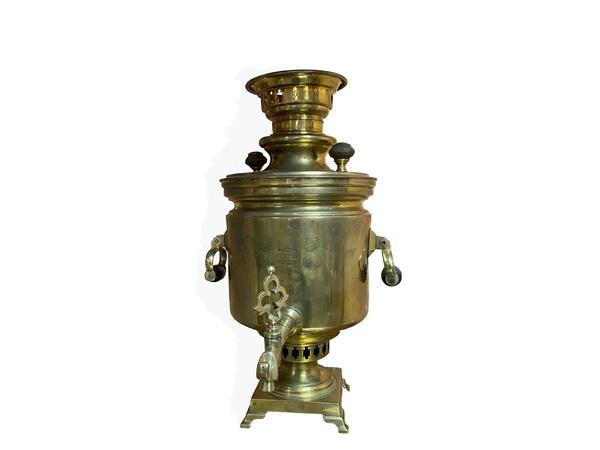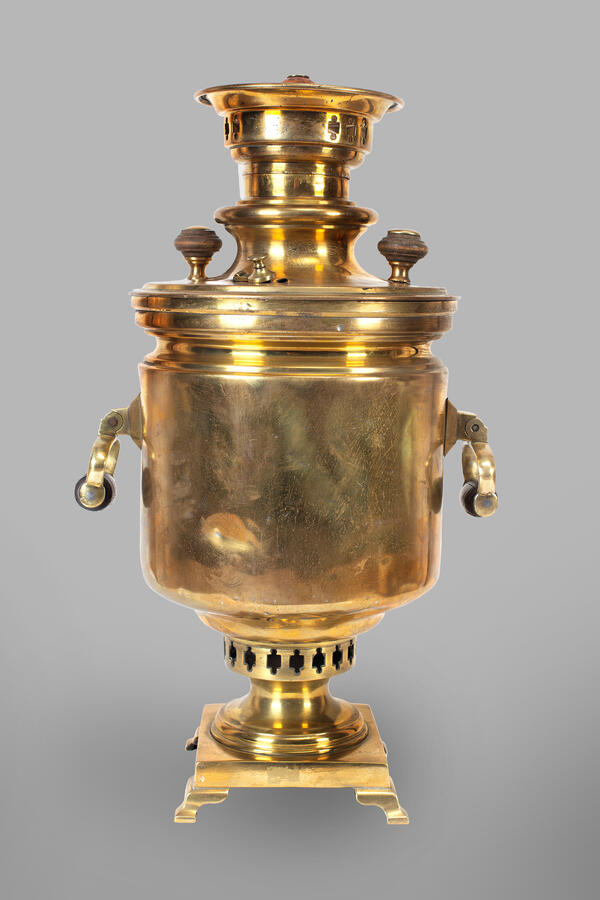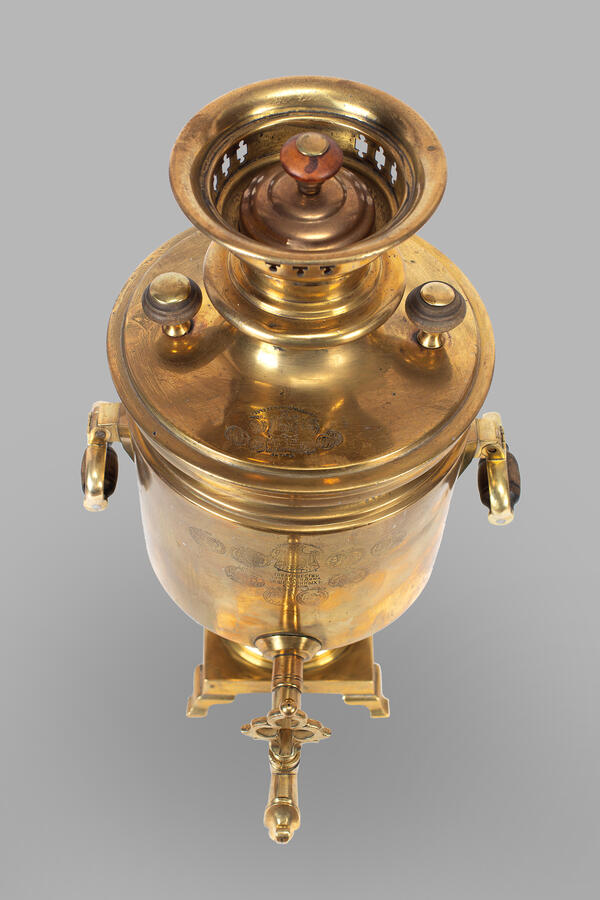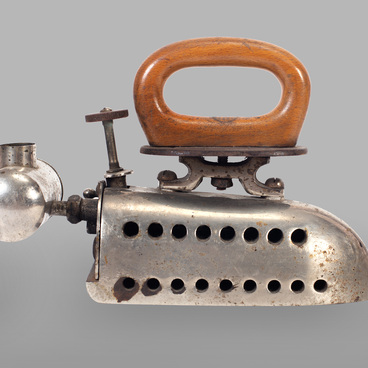The first samovars, used for heating water, appeared almost 4000 years ago. Their design around the world was pretty much the same — a metal vessel for water with a compartment for hot coals. The advent of tea in the 17th century made it necessary for Russian households to have hot water at the table. According to one of the legends, the first samovar was brought to Russia by Emperor Peter I from Holland — this item might have served as a model for all subsequent Russian samovars. The Russian capital of samovars is the city of Tula, which has been producing them for about 250 years.
The samovar in the shape of a jar was made in the early 20th century by The Trading House of the Shemarin Brothers. The body of the samovar features stamps of quality and the manufacturer hallmark. The Shemarin factory was one of the most famous in Tula, Russia, and even Europe. Their samovars were distinguished by elegance, quality, and unusual shapes — of a vase, a jar, a vodka glass, or a sphere. The Shemarin factory produced children’s and giant samovars, pear-shaped and egg-shaped samovars in the Rococo style. The samovars were popular with sheiks and European aristocrats.
The history of the famous samovar brothers began with their father, who was of ordinary serf origin. After being manumitted, the blacksmith Ivan Shemarin and his family moved to the Tula Governorate, where he launched the samovar business. He was later joined by his sons — Vladimir, Dmitry, and Alexander. Having gained some experience, the brothers moved to the city of Tula and opened their own workshop. Shemarin’s elder sons made samovars, while the younger ones, Nikolay and Andrey, were in charge of sales and bookkeeping.
The advantageous marriage of one of the brothers helped the Shemarins to expand their business: a small factory for the production of travel-size samovars came as a dowry. The brothers united the factories, modernized the equipment, built a two-story building, and established their own Trading House.
In the early 20th century, the Shemarin samovars received a Big Silver Medal at the World’s Fair in Paris. At that time, the enterprise could boast of producing over 100 types of samovars with an output of at least 6,000 pieces every month.
After the revolution of 1917, the factory of the Shemarin brothers was nationalized and renamed after Vladimir Lenin. The new factory continued to make the best samovars in Tula for another 15 years.
The samovar in the shape of a jar was made in the early 20th century by The Trading House of the Shemarin Brothers. The body of the samovar features stamps of quality and the manufacturer hallmark. The Shemarin factory was one of the most famous in Tula, Russia, and even Europe. Their samovars were distinguished by elegance, quality, and unusual shapes — of a vase, a jar, a vodka glass, or a sphere. The Shemarin factory produced children’s and giant samovars, pear-shaped and egg-shaped samovars in the Rococo style. The samovars were popular with sheiks and European aristocrats.
The history of the famous samovar brothers began with their father, who was of ordinary serf origin. After being manumitted, the blacksmith Ivan Shemarin and his family moved to the Tula Governorate, where he launched the samovar business. He was later joined by his sons — Vladimir, Dmitry, and Alexander. Having gained some experience, the brothers moved to the city of Tula and opened their own workshop. Shemarin’s elder sons made samovars, while the younger ones, Nikolay and Andrey, were in charge of sales and bookkeeping.
The advantageous marriage of one of the brothers helped the Shemarins to expand their business: a small factory for the production of travel-size samovars came as a dowry. The brothers united the factories, modernized the equipment, built a two-story building, and established their own Trading House.
In the early 20th century, the Shemarin samovars received a Big Silver Medal at the World’s Fair in Paris. At that time, the enterprise could boast of producing over 100 types of samovars with an output of at least 6,000 pieces every month.
After the revolution of 1917, the factory of the Shemarin brothers was nationalized and renamed after Vladimir Lenin. The new factory continued to make the best samovars in Tula for another 15 years.






